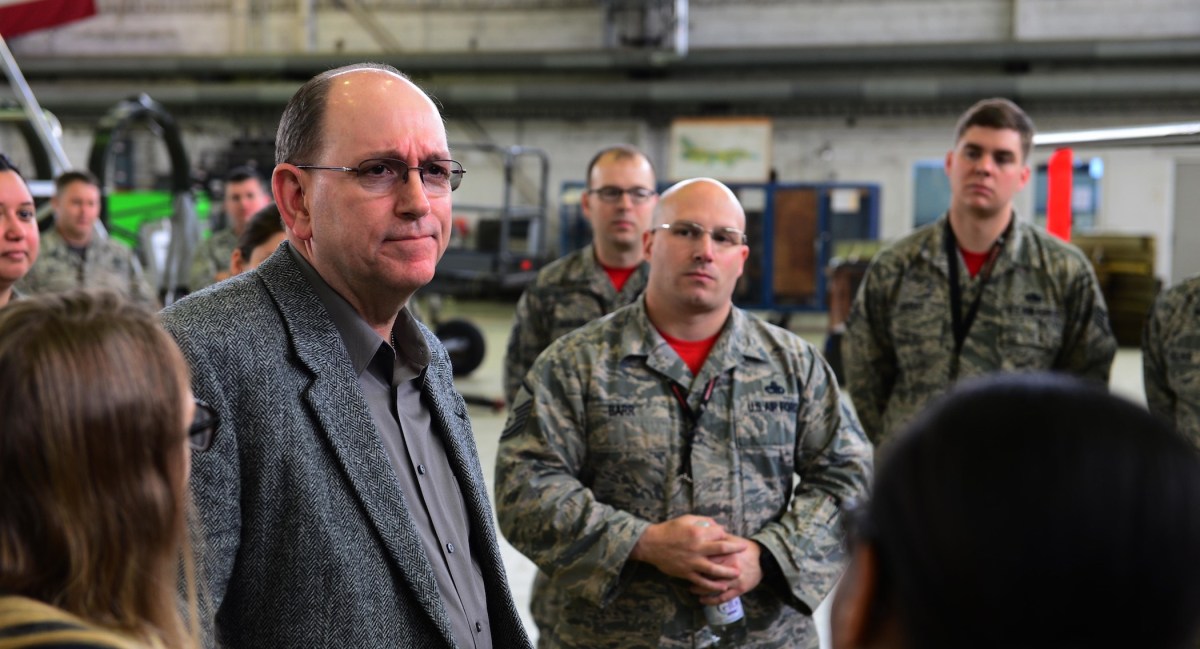Air Force launches digital-focused business plan

The Air Force published a business operations plan Monday anchored by the need to keep pace with evolving threats by driving better back-office support over the next three years, placing some emphasis on the modernization of the service’s digital operations.
“As the global strategic environment is rapidly changing, so too must the Air Force’s approach to business operations. The Department of the Air Force must move with a sense of urgency to reform how it delivers mission-enabling business operations such as fleet sustainment, cybersecurity, information management, recruitment and retention, and financial management,” says the plan.
The plan reflects some actions that the Air Force has already taken to streamline IT management, and it aligns with the recent National Defense Strategy to serve as a “management tool and present a roadmap for reform and improvement” for the Air Force through fiscal 2021.
“Each of the Department’s support processes exerts a critical downrange effect on the warfighter,” the plan says. “Delivering business operations and enterprise services on par with leading-edge global practices and productivity levels will enable the Air Force to continuously invest in modernization so we can deliver unmatched readiness and lethality in air, space, and cyberspace.”
Key to this effort, the plan explains, is a synchronization of effort among the chief information officer, chief management officer and chief data officer roles, all under the lead of Undersecretary Matt Donovan. Since October 2018, Donovan has served as both CMO and CIO. Air Force CDO Eileen Vidrine reports directly to him.
This trio undergirds the service’s Digital Air Force initiative, which strives to evolve “how the force gathers, uses, and shares data.”
“Data will power next-generation combat, so the Air Force must control and manipulate massive volumes of information to out-think and out-maneuver its opponents,” Donovan writes in the opening of the plan. “The ‘Digital Air Force’ initiative will ensure all Airmen have uninterrupted access to the data they need, where and when they need it.”
Donovan and Deputy CIO Bill Marion recently detailed how this Digital Air Force shift “reflects the merging of warfighting and business processes.”
Effectively, it centers on the need “to build and provide decision-quality data in a faster way so that senior leaders can get information in near-real time,” Donovan told reporters during a briefing on the new plan and structuring of the CIO, CMO and CDO roles. “We’ve got to have those three pieces, we’ve got to have the data.”
The Air Force is planning to release a data architecture strategy, Donovan said, that will serve as “guidelines” for how the service thinks about, uses and shares data.
“The key is an authoritative data source,” he said. “If you have 200 Air Force bases out there, and they’re all tracking something, but they’re all doing it on their own laptops on Excel spreadsheets, it’s just not going to work anymore. We can’t get to that speed of relevance … to get the decisions to the decision-maker at the right time.”
Marion, who served as acting CIO until Donovan’s appointment and oversaw the Air Force’s work to take a more commoditized approach to enterprise IT, said that technologies like artificial intelligence and machine learning aren’t possible “if you don’t have that end-to-end business system linked with the data elements with infrastructure, right, it’s these unspoken voids. People like to jump to the end state, like, ‘We’re just going to have AI.’ That’s just not real.”
Led by the CDO, one of the plan’s objectives is tied directly to the mission to harness data and make timely decisions from it. Additionally, it prioritizes enhancing cybersecurity and IT capabilities across the service in a separate goal.
“Today’s security challenges cannot be solved with yesterday’s thinking or technology. In FYs 2019-2021, the Air Force will pursue opportunities to streamline our IT enterprise to reduce costs, improve efficiency, and bring our IT investments in line with commercial best practices,” the plan says. “Specific activities will include leveraging commercial services and products to meet mission requirements, standardizing products and increasing IT effectiveness through governance, and leveraging Air Force, Department of Defense, and federal buying power for best prices.”
Donovan and the leaders responsible for each objective under the plan will meet quarterly to assess progress.






